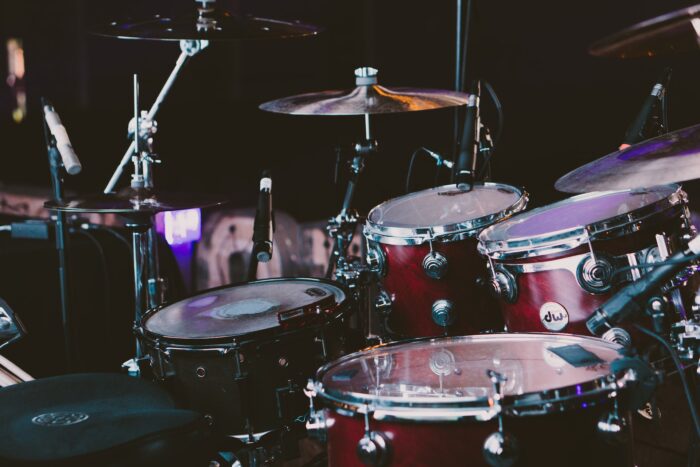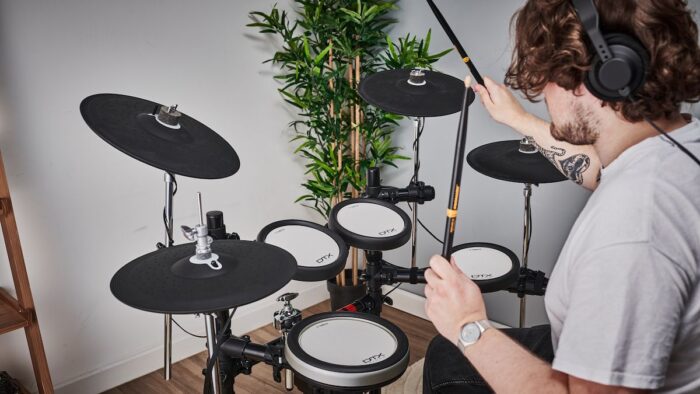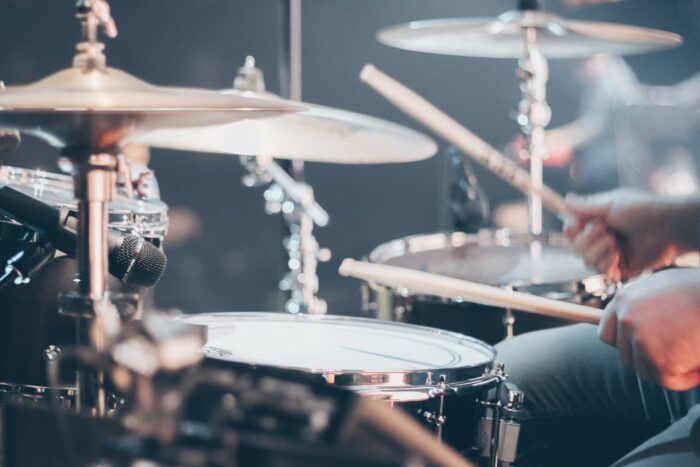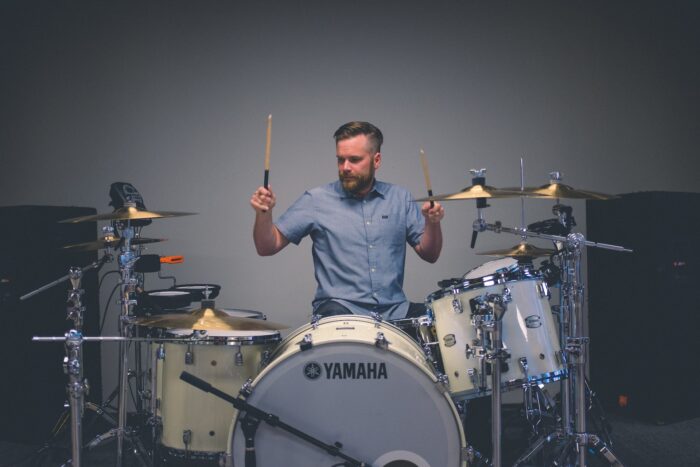
Drums are an integral component of music, and their history is as diverse and fascinating as the different cultures that have embraced them. This article will provide a brief introduction to drums, their definition, and the history of drumming.
Definition of Drums: Generally speaking, drums are percussion instruments consisting of a membrane (also known as a head) stretched across a frame or shell. The membrane can be made from various materials such as plastic, calfskin, synthetic materials or metal. The sound produced by striking the membrane is created by the vibrations in the air caused by striking it with sticks or hands. So whether you want to learn the basics or are ready to take your drumming to the next level, a drum course Hong Kong can help.
History of Drumming: Drumming has been around for thousands of years and has its origins in many different cultures from all over the world including African, Latin American Indian and Asian countries. In some cultures it was used for religious ceremonies while in others it was used for communication between tribes or to set marching cadence during military marches. In modern times drumming is still used to create rhythms that accompany songs or dances but also serves as an important part of popular music styles like rock-n-roll, jazz and hip-hop/rap music. Drums have been around since ancient times.
Types of Drums
- Acoustic Drums
- Electronic Drums
Drums are one of the most popular instruments in the world. They provide a rhythmic foundation for many types of music and are used in a variety of settings, from jazz and rock to pop and funk. There are two main types of drums – acoustic drums and electronic drums.
Acoustic Drums

Acoustic drums are the traditional type, consisting of a shell made from wood or other materials that’s stretched with animal skins (or heads) to create an airtight seal. The drum is then struck with sticks or beaters to create sound waves, which vibrate the drum head and resonate inside the shell. Acoustic drums come in a variety of sizes and shapes, ranging from small snare drums to large bass drums. They also come in sets that include several different types, such as cymbals, tom-toms, snares, hi-hats and more. Acoustic drums offer rich tones that can be felt as well as heard; they’re also capable of producing a wide range of dynamic levels depending on how hard they’re hit by the drummer’s sticks or beaters.
Electronic Drums

Electronic drums have become increasingly popular over recent years due to their versatility compared to acoustic kits.
Drum Kits & Setup
- Components and Accessories
- Setting Up Your Kit For the Best Sound and Performance
When it comes to setting up a drum kit, there are several components and accessories that need to be considered. Choosing the right drums, cymbals, stands, hardware, pedals and other accessories can have a huge impact on the sound of your kit. Here is an overview of what you need to look for when choosing components and accessories for your drum setup.
Drums: The type of drums you choose will depend on the sound you’re looking for. Whether you prefer wood or metal shells, single-headed or double-headed drums; there are plenty of options available in various sizes so make sure you select the right ones for your desired sound.
Cymbals: Cymbals can also greatly influence the overall sound of your kit so take some time selecting appropriate models that suit your style of playing. You can choose from a variety of sizes, materials (e.g., brass or bronze), shapes (e.g., ride cymbal or hi-hat) and thicknesses (heavy vs light).
Stands: Stands are important because they support all the different parts of your drum set including cymbals and hardware such as thrones.

Basic Techniques & Grooves
- Fundamentals: Holding the Sticks, Posture, Timing, etc
- Developing Coordination and Independence
- Playing grooves in different styles (rock, jazz, funk)
- Adding Fills to your Groove
Being able to play a solid groove is essential for any drummer, whether you are playing in a rock band, jazz quartet or funk ensemble. In this article we will look at some of the basic techniques and grooves that every drummer should know.
1. Fundamentals: Holding the Sticks, Posture, Timing etc.
The first thing every drummer needs to learn is how to properly hold the sticks and maintain proper posture for maximum comfort and power when playing. Also important is learning good timing habits so that you can play with precision and accuracy without losing your place in the song or falling behind or ahead of where you need to be.
2. Developing Coordination and Independence
Once you have mastered the basics it’s time to start developing coordination between your hands and feet as well as independence between them so that you can play more complex rhythms accurately without one part getting ahead of or behind another part which would ruin your groove. This requires lots of practice but eventually it will become second nature when you’re playing live on stage (or in a studio).
Advanced Concepts
A . Polyrhythms
B . Syncopation
C . Displacement
D . Double Bass
In music, advanced concepts such as polyrhythms, syncopation, displacement and double bass can be a challenge for the inexperienced musician. But with some practice and an understanding of these music fundamentals, even the novice musician can develop their skills to create some exciting and unique sounds.
Polyrhythms involve playing two or more rhythms simultaneously in order to create a complex pattern of sound. A simple example of this is two people clapping together at different tempos; one claps twice as rapidly as the other. This creates a more interesting rhythm than if they were clapping at the same speed. Polyrhythms are often used in genres such as jazz and Latin music for added complexity and texture.
Syncopation is another musical concept that involves accenting beats that normally wouldn’t be accented or emphasizing certain notes or syllables within a phrase of music by playing them louder than others around it. This helps give pieces an exciting edge while still keeping it interesting throughout its entirety. Syncopation is often found in hip-hop, funk and reggae styles of music due to its emphasis on rhythm rather than melody or harmony.
Displacement involves taking short rhythmic phrases from one part of a song.

Practicing and Performance: A Guide for Musicians
A . Soloing
B . Jamming with other musicians
C . Performance Tips
Whether you’re a singer, instrumentalist, or composer, perfecting your craft and honing your skills is essential to developing as an artist. From solo practice sessions to jamming with other musicians and performing in front of an audience, the following guide offers tips on how to make the most out of each type of practice session.
- Solo Practice: No matter what instrument you play or how long you’ve been playing it, solo practice is key to improving your playing ability. When practicing alone, focus on specific sections of music that need improvement or tackle new pieces that challenge your current skill level. Set achievable goals for yourself during each session and strive for consistency—regularly scheduled practice sessions will help ensure steady progress over time. When practicing by yourself, take advantage of recording technology so that you can listen back and assess your performance objectively; this will enable you to identify any areas where improvement is needed before taking a piece out into the public eye.
- Jamming with Other Musicians: Working with other people can bring about creative breakthroughs that wouldn’t have been possible otherwise—so don’t be afraid to get together with other musicians from time
Conclusion
The drum course has been a great experience for any aspiring drummer. It has helped to develop essential drumming skills, as well as helping to build confidence and broaden creative horizons. With the right practice and dedication, you will be able to use what you have learned in the course to improve your playing and become a better musician overall.








